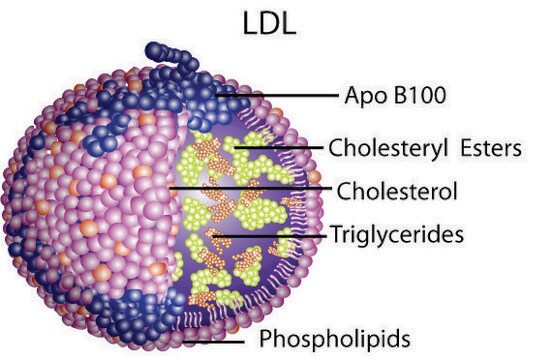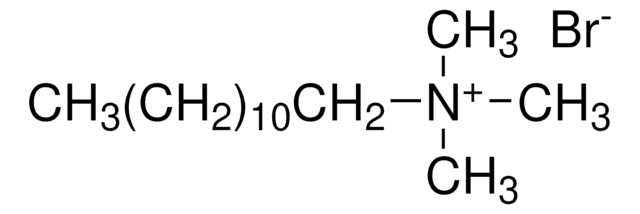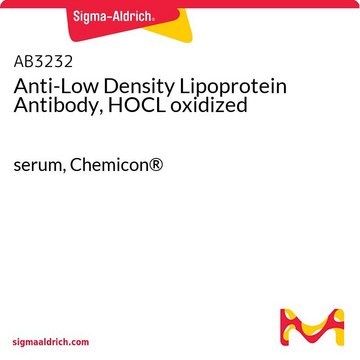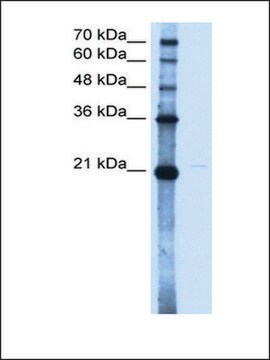L7914
Lipoprotein, low density from human plasma
≥95% (SDS-PAGE), solution
Sinónimos:
β-Lipoprotein, LDL, Low density lipoprotein
About This Item
Productos recomendados
origen biológico
human plasma
Nivel de calidad
Ensayo
≥95% (SDS-PAGE)
Formulario
solution
grupo funcional
ester
phospholipid
Condiciones de envío
wet ice
temp. de almacenamiento
2-8°C
Información sobre el gen
human ... APOB(338) , APOC2(344) , APOE(348)
¿Está buscando productos similares? Visita Guía de comparación de productos
Aplicación
- as an additive in cholesterol-free RPMI media
- as a component in buffer to perform an assay for measuring lipid peroxidation
- to stimulate hepatic macrophages
- as a plasma protein to determine pazopanib unbound fraction (fu%) by equilibrium dialysis
Acciones bioquímicas o fisiológicas
Precaución
Propiedades físicas
Forma física
Otras notas
Cláusula de descargo de responsabilidad
Código de clase de almacenamiento
10 - Combustible liquids
Clase de riesgo para el agua (WGK)
WGK 3
Punto de inflamabilidad (°F)
Not applicable
Punto de inflamabilidad (°C)
Not applicable
Elija entre una de las versiones más recientes:
¿Ya tiene este producto?
Encuentre la documentación para los productos que ha comprado recientemente en la Biblioteca de documentos.
Los clientes también vieron
Artículos
Since cholesterol is a water-insoluble molecule it must be packaged for transport within the plasma. The particles that package cholesterol, cholesteryl esters, and triglycerides for transport, are called lipoproteins.
The potential for the prevention and treatment of cardiovascular disease through increased dietary intake of omega-3 (w-3) fish oils is not a recent scientific discovery.
Nuestro equipo de científicos tiene experiencia en todas las áreas de investigación: Ciencias de la vida, Ciencia de los materiales, Síntesis química, Cromatografía, Analítica y muchas otras.
Póngase en contacto con el Servicio técnico










